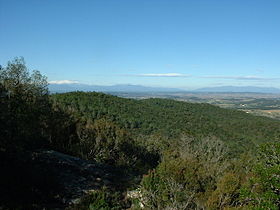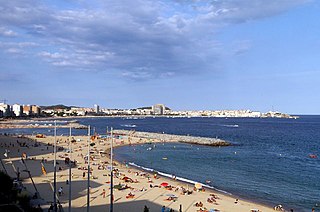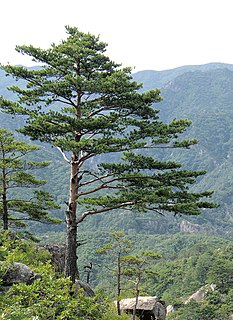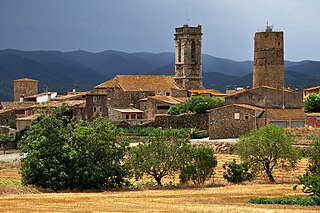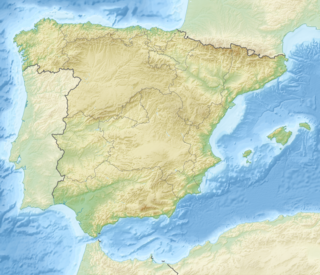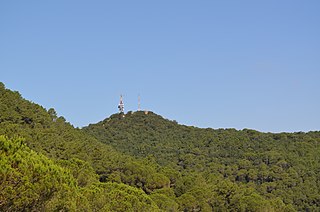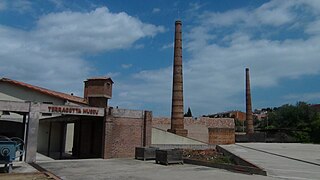| Gavarres | |
|---|---|
View of the Serra de Cals in the Gavarres Massif | |
| Highest point | |
| Elevation | 532 m (1,745 ft) |
| Coordinates | 41°54′57″N2°58′46″E / 41.91583°N 2.97944°E Coordinates: 41°54′57″N2°58′46″E / 41.91583°N 2.97944°E |
| Geography | |
| Parent range | Catalan Coastal Range |
| Geology | |
| Mountain type | Silicious |
| Climbing | |
| First ascent | Unknown |
| Easiest route | From La Bisbal d'Empordà |
Les Gavarres or Massís de les Gavarres is a mountain massif in Catalonia, Spain. It is part of the Catalan Coastal Range. The highest point is Puig d'Arques, 532 m. Other important summits are Mare de Déu dels Àngels (485 m) and Santa Pellaia (353 m).

Catalonia is an autonomous community in Spain on the northeastern corner of the Iberian Peninsula, designated as a nationality by its Statute of Autonomy. Catalonia consists of four provinces: Barcelona, Girona, Lleida, and Tarragona. The capital and largest city is Barcelona, the second-most populated municipality in Spain and the core of the sixth most populous urban area in the European Union. It comprises most of the territory of the former Principality of Catalonia. It is bordered by France (Occitanie) and Andorra to the north, the Mediterranean Sea to the east, and the Spanish autonomous communities of Aragon to the west and Valencia to the south. The official languages are Catalan, Spanish, and the Aranese dialect of Occitan.

Spain, officially the Kingdom of Spain, is a country mostly located in Europe. Its continental European territory is situated on the Iberian Peninsula. Its territory also includes two archipelagoes: the Canary Islands off the coast of Africa, and the Balearic Islands in the Mediterranean Sea. The African enclaves of Ceuta, Melilla, and Peñón de Vélez de la Gomera make Spain the only European country to have a physical border with an African country (Morocco). Several small islands in the Alboran Sea are also part of Spanish territory. The country's mainland is bordered to the south and east by the Mediterranean Sea except for a small land boundary with Gibraltar; to the north and northeast by France, Andorra, and the Bay of Biscay; and to the west and northwest by Portugal and the Atlantic Ocean.

The Catalan Coastal Range is a system of mountain ranges running parallel to the Mediterranean Sea coast in Catalonia, Spain. It is part of the Catalan Mediterranean System. Its main axis runs between the Foix River and the Roses Gulf and the average altitude is around 500 m. The highest point is 763 m at the Montnegre.
